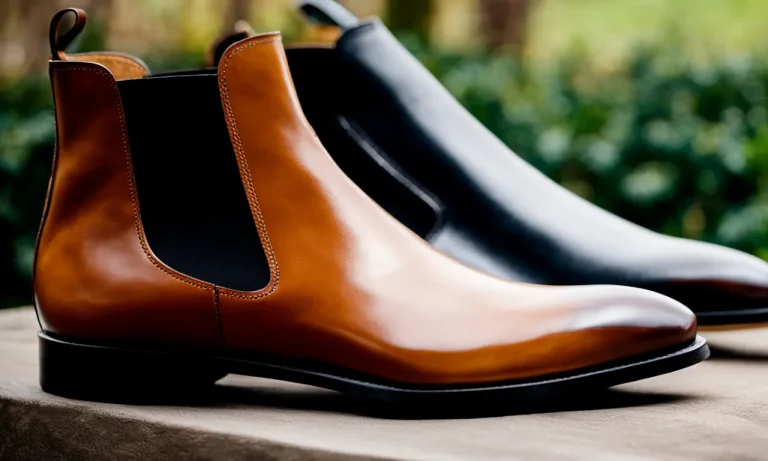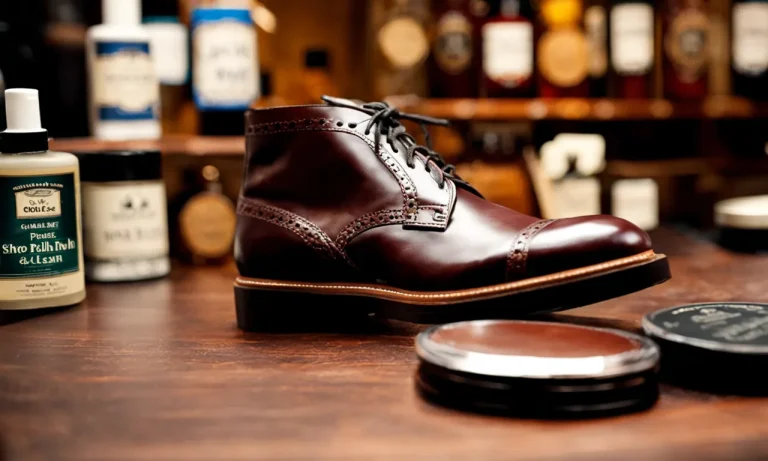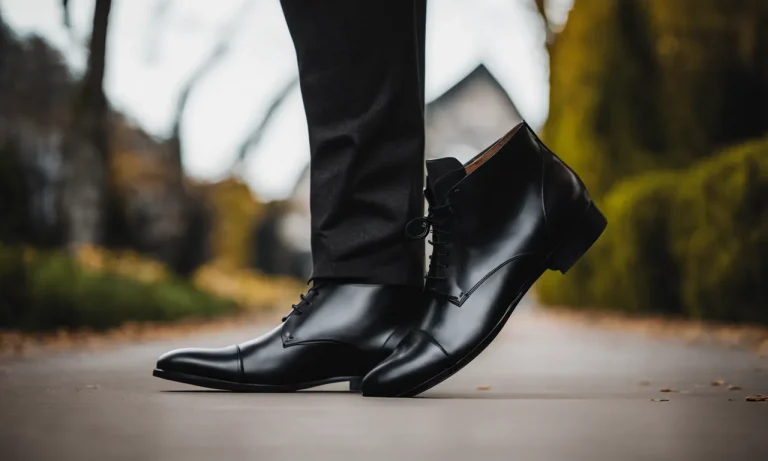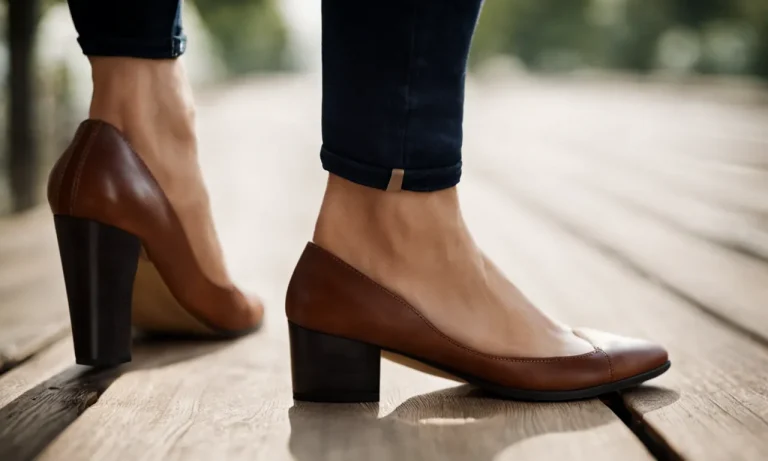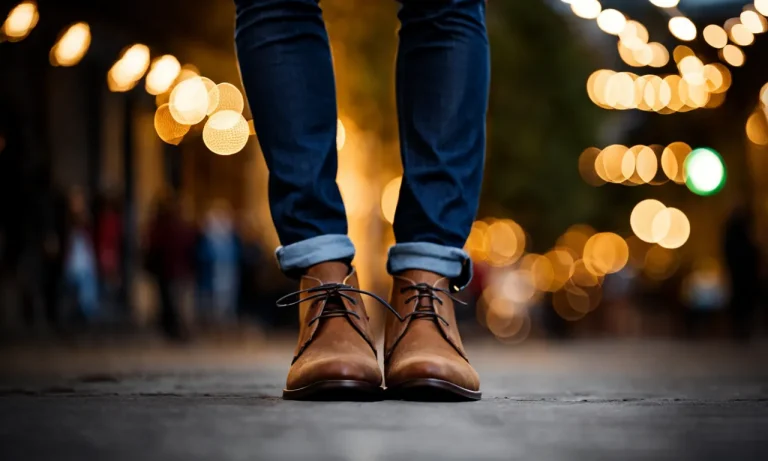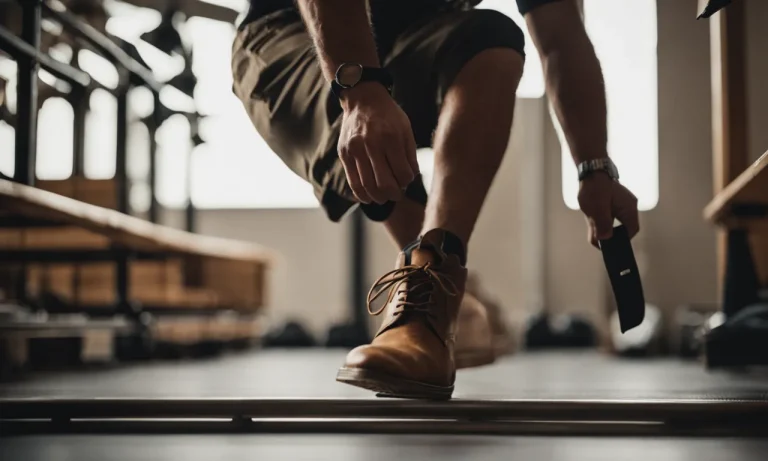If you’ve ever felt like one of your shoes fits just right while the other feels too tight or too loose, you’re not alone. In fact, it’s incredibly common for people to have two different shoe sizes, one for each foot.
If you’re short on time, here’s a quick answer to your question: It’s normal for people to have slightly different sized feet. This difference is often small, like a half or full shoe size. It happens because feet are not perfectly symmetrical.
Factors like genetics, injuries, and activity levels can make one foot larger.
In this comprehensive article, we’ll explore all the details around having two different shoe sizes. We’ll look at the main causes, how much of a size difference is normal, downsides of ill-fitting shoes, tips for finding the right size, and more.
What Causes One Foot to Be Bigger Than the Other?
Having one foot larger than the other is a common occurrence among individuals. There are several factors that can contribute to this phenomenon, including genetics, injuries or medical conditions, and activity levels and wear patterns.
Genetics and Foot Dominance
One of the main reasons for having different shoe sizes for each foot is genetics. Just as individuals inherit different physical traits, such as eye color or hair texture, foot size can also vary between family members. This can result in one foot being slightly larger or wider than the other.
Additionally, foot dominance can play a role in the size difference. Similar to handedness, where individuals favor one hand over the other, foot dominance refers to a preference for using one foot more than the other.
This can cause the dominant foot to develop slightly differently, leading to a size discrepancy.
Injuries and Medical Conditions
Injuries and medical conditions can also contribute to a difference in foot size. For instance, a fracture or sprain in one foot can cause swelling and inflammation, temporarily increasing its size. In some cases, the injured foot may heal with a slightly different size or shape compared to the unaffected foot.
Medical conditions such as arthritis or conditions affecting the bones, muscles, or connective tissues can also lead to foot size discrepancies. These conditions can cause changes in the foot’s structure or result in abnormalities that affect its size.
Activity Levels and Wear Patterns
The activities individuals engage in and their wear patterns can impact foot size. For example, individuals who participate in high-impact sports or activities that require repetitive movements may experience changes in their foot size due to increased muscle development or wear on certain areas of the foot.
Moreover, the way individuals distribute their weight while walking or standing can also influence foot size. Those who consistently put more pressure on one foot may notice a difference in size over time.
It is important to note that having different shoe sizes for each foot is relatively common and usually does not cause significant issues. However, for individuals experiencing discomfort or difficulty finding well-fitting shoes, consulting with a podiatrist or footwear specialist can provide valuable guidance and solutions.
How Much of a Size Difference is Common?
It is not uncommon for individuals to have slightly different shoe sizes for each foot. In fact, research suggests that around 60% of people have a noticeable discrepancy in foot size, with one foot being slightly larger than the other.
This difference in size can range anywhere from a quarter of a shoe size to a full shoe size or more.
Factors Contributing to Size Differences
There are several factors that can contribute to the difference in size between the left and right foot. One of the main factors is genetics. Just as individuals can inherit different physical traits from their parents, it is possible to inherit asymmetrical feet as well.
Additionally, factors such as foot injuries, medical conditions like arthritis or edema, and even changes in weight can also affect the size and shape of the feet, leading to differences in shoe size.
Importance of Properly Fitting Shoes
Wearing shoes that fit properly is essential for foot health and overall comfort. When one foot is larger than the other, it is important to choose shoes that accommodate the larger foot to prevent discomfort, blisters, and other foot-related problems.
Wearing ill-fitting shoes can also lead to issues with balance and stability, which can increase the risk of falls and injuries.
Did you know? Many shoe manufacturers offer shoes in different widths to accommodate variations in foot size. So, if you have a significant difference in size between your feet, it may be worth considering shoes with different widths to ensure a proper fit for both feet.
Getting the Right Fit
When buying shoes, it is recommended to measure both feet and choose the size that accommodates the larger foot. It is always best to try on shoes and walk around in them to ensure a comfortable fit. If the size difference between your feet is significant, you may need to purchase two pairs of shoes in different sizes or consider using shoe inserts or insoles to compensate for the size difference.
Remember, having slightly different shoe sizes for each foot is common, and it is important to prioritize comfort and proper fit to maintain good foot health. If you have concerns about foot size differences or experience discomfort while wearing shoes, it is always advisable to consult with a podiatrist or a footwear specialist for professional guidance.
Potential Problems of Wearing the Wrong Size
Discomfort and Pain
One of the most common problems that arise from wearing the wrong shoe size is discomfort and pain. When your shoes are too small, they can squeeze your feet, causing pain and discomfort. On the other hand, if your shoes are too big, your feet may slide around inside, leading to blisters and discomfort.
This can make it difficult to walk or stand for long periods of time, affecting your overall comfort and well-being.
Blisters and Calluses
Wearing ill-fitting shoes can also result in blisters and calluses. When your shoes are too tight, they can rub against your skin, causing friction and leading to painful blisters. Similarly, shoes that are too loose can cause your feet to move around excessively, leading to friction and the formation of calluses.
Blisters and calluses can be not only painful but also unsightly, affecting the appearance of your feet.
Pressure Sores
Another potential problem of wearing the wrong shoe size is the development of pressure sores. When your shoes are too tight or too loose, they can create areas of excessive pressure on certain parts of your feet.
Over time, this constant pressure can lead to the formation of pressure sores, which are painful and can take a long time to heal. Pressure sores can be particularly problematic for individuals with diabetes or other conditions that affect blood circulation.
Impact on Posture and Gait
Wearing shoes that don’t fit properly can also have a negative impact on your posture and gait. When your shoes are too small or too big, they can throw off the alignment of your feet and cause you to walk unnaturally.
This can lead to issues such as back pain, knee pain, and even problems with your balance. Maintaining proper alignment and balance is crucial for overall health and well-being.
It is important to note that these problems can be exacerbated over time if the wrong shoe size is consistently worn. It is recommended to get your feet measured regularly and invest in properly fitting shoes to avoid these potential problems.
Tips for Finding the Right Size Shoes
Get Professionally Fitted
One of the most important tips for finding the right size shoes is to get professionally fitted. Many people assume they know their shoe size, but it’s not uncommon for your feet to change over time. By visiting a professional shoe fitter, you can ensure that you are wearing the correct size.
They will measure both feet and take into account any specific needs or foot conditions you may have.
Try on Both Shoes
When trying on shoes, it’s essential to try on both the left and right shoe. It’s not uncommon for individuals to have slightly different foot sizes, and this can make a big difference in finding a comfortable fit.
By trying on both shoes, you can ensure that both feet are properly accommodated and avoid discomfort or pain.
Consider Custom Orthotics
If you have specific foot conditions or require additional support, custom orthotics may be a great option. These are specially made shoe inserts that are designed to address your individual foot needs. They can help improve comfort, stability, and alignment.
Consult with a podiatrist or orthopedic specialist to determine if custom orthotics are right for you.
Shop for Width as Well as Length
When shopping for shoes, it’s important to consider the width as well as the length. Not all shoe brands or styles are created equal, and some may run narrower or wider than others. If you have wider or narrower feet, be sure to look for shoes that offer different width options.
This will ensure a more comfortable fit and prevent any rubbing or pinching.
Remember, finding the right size shoes is crucial for your overall comfort and foot health. By following these tips, you can increase your chances of finding the perfect fit. Don’t be afraid to ask for assistance from a professional shoe fitter or consult with a specialist if you have specific foot concerns.
Your feet will thank you!
How to Tell if Your Feet are Different Sizes
Having different shoe sizes for each foot is more common than you might think. In fact, research shows that up to 60% of people have feet that are different sizes. So, how can you tell if your feet fall into this category?
1. Pay Attention to How Your Shoes Fit
One of the easiest ways to determine if your feet are different sizes is to pay attention to how your shoes fit. If one foot feels tight and uncomfortable while the other feels loose and spacious, it’s a clear indication that there is a size difference between your feet.
2. Measure Your Feet
Measuring your feet is another method to determine if there is a noticeable difference in size. Use a measuring tape or ruler to measure the length and width of both feet. Take note of any significant differences between the two measurements.
3. Observe Visual Differences
Take a closer look at your feet and observe any visual differences between them. Look for variations in size, shape, or arch height. You may also notice that one foot appears to be wider or longer than the other.
4. Seek Professional Help
If you’re still unsure about whether your feet are different sizes, it’s best to seek professional help. A podiatrist or shoe fitting specialist can accurately measure your feet and provide expert advice on choosing the right shoe sizes for each foot.
Remember, having different shoe sizes for each foot is perfectly normal. It’s important to prioritize comfort and support when choosing footwear to ensure both of your feet are well taken care of.
Conclusion
Having two different shoe sizes, one for each foot, is very normal. In fact, most people have at least a half-size difference between their feet. While a small discrepancy is harmless, wearing shoes that don’t properly fit can lead to pain and foot problems over time.
Pay attention to any discomfort you’re having and get your feet measured whenever buying new shoes. With some extra care finding the right fit, you can keep both your feet happy and healthy, even if they are different sizes.

